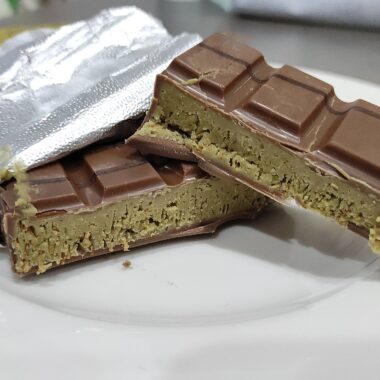Finding the perfect spot for a trash can in a small kitchen can be a tricky task. With limited space, every inch counts, and ensuring that your trash can is both accessible and unobtrusive requires thoughtful consideration. Here are some practical tips to help you make the best decision for your compact kitchen space.
Under the Sink
Pros:
Out of Sight: Placing the trash can under the sink keeps it hidden from view, maintaining a clean and tidy kitchen appearance.
Convenient for Cleanup: It’s easy to sweep scraps directly into the bin when it’s close to the sink, where much of the kitchen mess originates.
Cons:
Limited Space: The under-sink area is often shared with plumbing and cleaning supplies, so space can be tight.
Moisture Concerns: The damp environment under the sink can lead to unpleasant odors or even mold if the trash can isn’t managed properly.
Pull-Out Cabinet
Pros:
Hidden Storage: A pull-out cabinet for your trash can conceals waste completely, enhancing kitchen aesthetics.
Integrated Design: This option often includes a dual-bin system, allowing for easy separation of trash and recyclables.
Cons:
Installation Required: Adding a pull-out cabinet typically involves a bit of remodeling or at least some DIY effort.
Space Dedication: It requires dedicating a full cabinet to waste storage, which might be a luxury in a small kitchen.
Corner Space
Pros:
Utilizes Unused Areas: Corners are often underutilized, making them ideal for placing a trash can without interfering with daily kitchen activities.
Easy Access: Keeping the trash can in a corner makes it easily accessible while cooking and cleaning.
Cons:
Visual Impact: Even though it’s tucked away, a trash can in the corner is still visible and may not suit everyone’s taste.
Limited Size: Corner space might not accommodate larger trash cans, necessitating more frequent emptying.
Under the Counter
Pros:
Accessibility: Under-the-counter placement provides easy access while keeping the trash can partially hidden.
Customizable: You can choose a size that fits your needs without worrying about cabinet constraints.
Cons:
Foot Traffic: Placing the trash can under the counter might interfere with foot traffic, depending on your kitchen layout.
Potential Clutter: Without proper management, this area can quickly become cluttered and detract from the kitchen’s aesthetics.
Freestanding in a Nook
Pros:
Flexible Placement: A freestanding trash can can be moved around as needed, making it adaptable to different kitchen layouts and uses.
Variety of Styles: Freestanding options come in many styles, sizes, and materials, allowing you to choose one that complements your kitchen decor.
Cons:
Visible: Even the most stylish trash can is still visible and can disrupt the visual flow of a small kitchen.
Floor Space: It takes up valuable floor space, which is at a premium in small kitchens.
Inside a Pantry
Pros:
Out of Sight: Keeping the trash can inside a pantry door makes it completely hidden when the door is closed.
Odor Control: Being enclosed can help contain odors better than an open space.
Cons:
Convenience: It may be less convenient to open a pantry door every time you need to throw something away.
Pantry Space: This method takes away from your pantry storage, which might already be limited in a small kitchen.
When deciding where to place your trash can in a small kitchen, consider the following:
Frequency of Use: Place it in an area that’s easy to access during your most common kitchen tasks.
Aesthetics vs. Functionality: Balance the need for a neat appearance with practical accessibility.
Trash Can Size: Choose a trash can size that fits the available space and your household’s waste production to avoid constant emptying.
Ultimately, the best placement for a trash can in a small kitchen is one that fits your lifestyle and kitchen habits. By thoughtfully considering your options and experimenting with different placements, you can find a solution that keeps your kitchen both functional and clutter-free.
Creative Solutions for Small Kitchens
In addition to the standard options mentioned, here are a few creative solutions to help you optimize your small kitchen space:
Wall-Mounted Trash Can
Pros:
Space-Saving: Mounting a trash can on the wall frees up valuable floor space.
Ease of Access: It can be positioned at a convenient height for easy use.
Cons:
Installation: Requires drilling into the wall and may not be suitable for all wall types.
Capacity: Wall-mounted bins are typically smaller, which might necessitate more frequent emptying.
Tilt-Out Trash Bin
Pros:
Discreet: A tilt-out trash bin looks like a regular cabinet when closed, keeping your kitchen looking tidy.
Accessible: Easily accessible without taking up much space.
Cons:
Complex Installation: Might require some carpentry skills or professional installation.
Cabinet Space: Uses up cabinet space that might be needed for other storage.
Multi-Functional Furniture
Pros:
Dual Purpose: Furniture like an island with an integrated trash can provide additional counter space and storage.
Stylish: Can enhance the overall look of your kitchen while being highly functional.
Cons:
Cost: Multi-functional furniture can be expensive.
Space: Requires enough room to accommodate the piece of furniture.
Maintenance Tips
Regardless of where you place your trash can, maintaining it properly is crucial for a clean and pleasant kitchen environment:
Regular Cleaning: Clean your trash can regularly to prevent odor buildup and pest problems.
Use Liners: Always use trash can liners to make disposal easier and keep the can itself cleaner.
Odor Control: Use baking soda or charcoal filters to absorb odors. Some trash cans come with built-in odor control features.
Proper Waste Segregation: Ensure you are separating recyclables, compostables, and waste properly to reduce landfill contribution and keep your kitchen organized.
Choosing the right spot for a trash can in a small kitchen involves balancing practicality, aesthetics, and personal preferences. By considering the pros and cons of various placement options and incorporating creative solutions, you can find a setup that works seamlessly with your kitchen layout. Remember to maintain your trash can regularly to ensure it remains a functional and unobtrusive part of your kitchen space. With the right approach, even the smallest kitchen can be both efficient and beautiful.


















